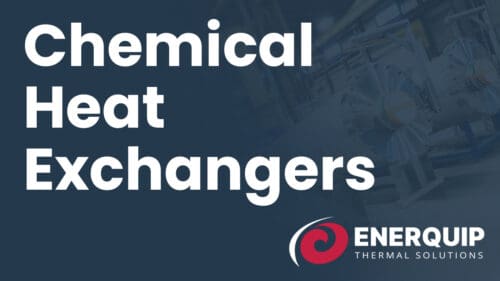How Almost Any Industry Can Benefit from Waste Heat Recovery
Leave a CommentIn a world where energy costs keep rising and sustainability expectations are higher than ever, waste heat recovery has become a smart — and surprisingly simple — way for facilities of all types to lower operating expenses, boost efficiency, and shrink their environmental footprint.
What is Waste Heat Recovery?
Waste heat recovery is the process of capturing heat that would otherwise escape into the air or environment and putting it to good use elsewhere — whether it’s preheating water, powering additional processes, or even generating electricity. It’s like giving your energy a second life instead of letting it slip away.
While nearly any large-scale operation can benefit, certain sectors are leading the charge by investing heavily in waste heat recovery systems. Let’s take a closer look at where these systems are making a serious impact — and why your facility might be next.
Industries Benefiting from Waste Heat Recovery
1. Oil, Gas, and Fuel Refining
Refining crude oil into fuel is one of the most energy-hungry industrial processes out there. Operations like distillation, cracking, and treatment generate intense amounts of heat. Waste heat recovery systems help refiners reuse that energy — reducing fuel consumption, cutting emissions, and improving overall plant efficiency.
2. Cement and Building Materials
The cement industry, famous for its massive kilns operating at up to 400°C, has seen a sharp rise in waste heat recovery adoption. Capturing heat from kiln exhaust not only slashes energy costs but also helps facilities meet tightening emissions regulations — a win-win for both profits and the planet.
3. Food and Beverage Production
Whether it’s cooking, pasteurization, or bottling, food and beverage plants generate plenty of excess heat. Many smart food processors have embraced waste heat recovery, using systems like Enerquip shell and tube heat exchangers to reroute and reuse energy throughout their facilities — improving sustainability and cutting costs along the way.
4. Colleges, Universities, and Large Campuses
Higher education institutions aren’t just teaching sustainability — they’re practicing it. Universities are installing heat exchangers and economizers to recover wasted energy from campus utilities, saving tens of thousands in energy bills and millions of gallons of water annually.
5. Chemical and Pharmaceutical Manufacturing
Precise temperature control is essential in chemical and pharma production. Waste heat recovery systems not only stabilize processes but also lower utility costs by capturing and reusing heat that would otherwise be lost in reactors, dryers, and condensers.
6. Data Centers and Technology Hubs
Those racks of servers aren’t just producing information — they’re generating a ton of heat. Forward-thinking data centers are now using waste heat recovery to heat office spaces, nearby buildings, or even entire city blocks, turning a liability into an asset.
7. Pulp, Paper, and Packaging Industries
Steam is king in pulp and paper plants. Capturing waste heat from steam vents and dryers can provide significant energy savings and help offset the high energy demands of paper production.
Why Waste Heat Recovery Matters More Than Ever
No matter the industry, one fact is clear: making the most of the energy you already produce is a powerful way to stay competitive. Waste heat recovery can:
- Cut fuel and utility costs significantly
- Boost overall energy efficiency
- Reduce greenhouse gas emissions
- Extend the life of existing equipment
- Support corporate sustainability initiatives
Ready to Put Your Waste Heat to Work?
If you think your facility might be leaking valuable heat (hint: it probably is), the experienced engineers at Enerquip are ready to help. We’ll work with you to design the right shell and tube heat exchanger or waste heat economizer solution to capture, redirect, and reuse your energy for maximum efficiency.
Reach out today — because saving money (and the planet) never goes out of style.


